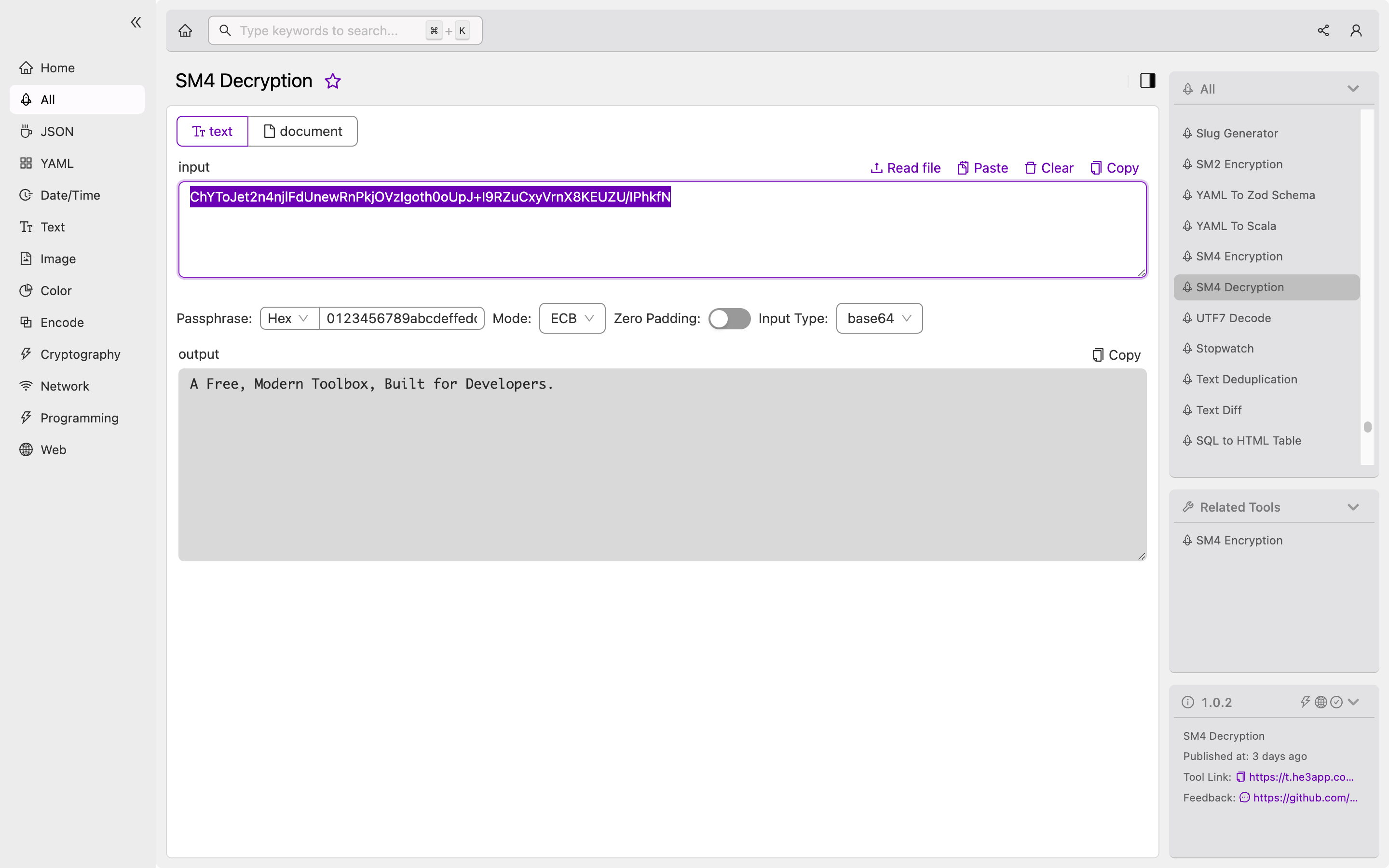Introduction
In today’s world of information security, encryption has become an essential tool for protecting sensitive data. SM4 Decryption is a powerful encryption algorithm used in cryptography to secure data transmissions and storage. Developed by the Chinese government, SM4 is now widely adopted as a standard encryption algorithm due to its security and scalability.
In this guide, we will explore the concept of SM4 Decryption, how it works, scenarios where it is used, and key features.
What Is SM4 Decryption?
SM4 is a symmetric encryption algorithm that uses a block cipher to secure data transmissions and storage. It is a member of the family of Advanced Encryption Standard (AES) ciphers and is widely used in China for secure data transmissions within government networks.
SM4 uses a 128-bit key length to encrypt 128-bit blocks of data. The algorithm consists of a matrix of substitution, permutation, and XOR operations that transform the plaintext into ciphertext. It is designed to be fast and efficient, making it a popular choice for encrypting large volumes of data.
How Does SM4 Decryption Work?
The SM4 encryption algorithm works by applying a series of substitution and permutation operations on the plaintext to transform it into ciphertext. These operations are performed on 128-bit blocks of data at a time, with each block being transformed independently of others.
The SM4 algorithm consists of four rounds of operations, each round applying a different set of substitutions and permutations. Each round includes four steps:
- Substitution: The plaintext is substituted with a new value using a substitution box (S-Box) table.
- Permutation: The output of the substitution step is permuted using a permutation box (P-Box) table.
- XOR: The permuted output is XORed with a 128-bit subkey derived from the main key.
- Key Update: The subkey used in the XOR step is updated for the next round, using a key schedule derived from the main key.
This process is repeated for each block of plaintext, resulting in a block of ciphertext at the end.
Scenarios for Using SM4 Decryption
SM4 Decryption can be used in a wide range of scenarios where secure data transmission and storage are required. Some examples include:
- Secure messaging applications: SM4 can be used to encrypt messages sent between users, ensuring that only authorized users can read the content.
- Cloud storage: SM4 can be used to encrypt data stored in the cloud, protecting it from unauthorized access.
- Online transactions: SM4 can be used to encrypt online transactions, ensuring that financial data is kept safe and secure.
Key Features of SM4 Decryption
SM4 Decryption offers several key features that make it a popular choice for secure data transmission and storage:
- Security: SM4 is a highly secure encryption algorithm, providing protection against brute-force attacks and other common cryptographic attacks.
- Scalability: SM4 is scalable and can be used to encrypt large volumes of data quickly and efficiently.
- Widely adopted: SM4 is now widely adopted as a standard encryption algorithm, making it easy to integrate into existing systems.
- Fast: SM4 is designed to be fast and efficient, making it a popular choice for encrypting large volumes of data.
Misconceptions about SM4 Decryption
There are some common misconceptions about SM4 Decryption that are important to dispel:
- SM4 is a Chinese encryption algorithm: While SM4 was developed by the Chinese government, it is now widely adopted as a standard encryption algorithm and is not limited to use within China.
- SM4 is only suitable for use within China: SM4 is suitable for use in any country and is now widely adopted as a standard encryption algorithm.
- SM4 is not secure: SM4 is a highly secure encryption algorithm that provides protection against brute-force attacks and other common cryptographic attacks.
FAQs about SM4 Decryption
- What is the difference between SM4 and AES encryption algorithms?
- SM4 and AES are both block ciphers but differ in key length and block size. AES uses a 128-bit block size and can use key lengths of 128, 192, or 256 bits, while SM4 uses a fixed 128-bit block size and key length.
- Can SM4 be used for secure data transmission over the internet?
- Yes, SM4 can be used for secure data transmission over the internet if used in conjunction with secure protocols such as SSL/TLS.
How To Use SM4 Decryption
To use SM4 Decryption, you can implement the algorithm in your code or use a decryption tool. Here’s a sample code for SM4 decryption:
// Import the SM4 library
import { SM4 } from 'sm-crypto';
// Define the key and ciphertext
const key = 'your-key';
const ciphertext = 'your-ciphertext';
// Decrypt the ciphertext using SM4
const plaintext = SM4.decrypt(ciphertext, key);
// Print the plaintext
console.log(plaintext);Or you can use SM4 Decryption tool in He3 Toolbox (https://t.he3app.com?6dil) easily.

Conclusion
In conclusion, SM4 Decryption is a powerful encryption algorithm used in cryptography to secure data transmissions and storage. It offers several key features, including security, scalability, and efficiency, making it a popular choice for encrypting large volumes of data. With this guide, developers can learn how to implement SM4 Decryption in their code to ensure their data is kept safe and secure.
References:
- https://en.wikipedia.org/wiki/SM4_(cipher)
- https://tools.ietf.org/id/draft-shen-sm4-ecb-cbc-ctr-mac-aead-03.html
- https://www.sciencedirect.com/science/article/pii/S1350482718302083
- https://www.researchgate.net/publication/351941857_SM4_Encryption_Algorithm_Based_on_Spark_Framework
Keywords: SM4 Decryption, encryption, decryption, cryptography, developers.
